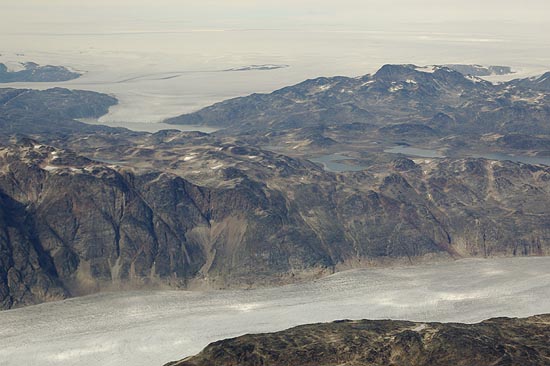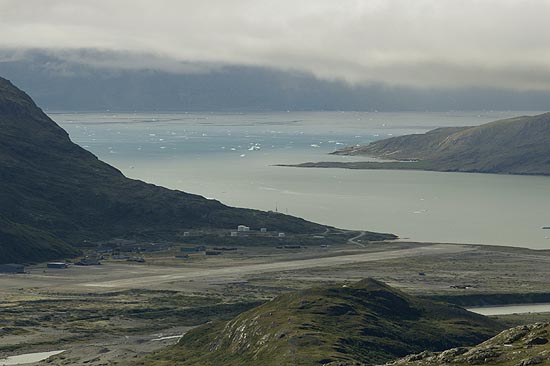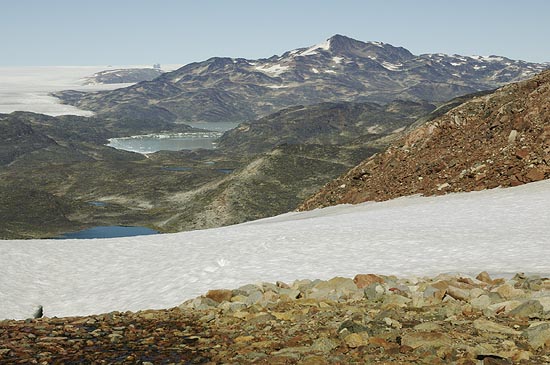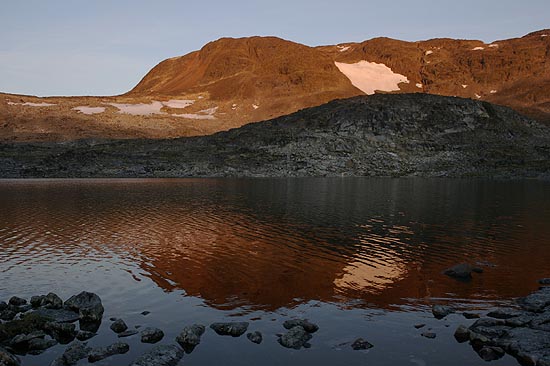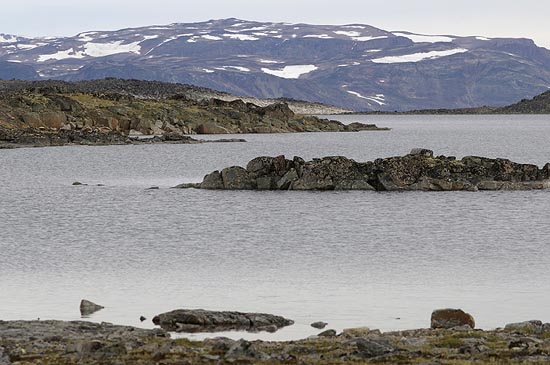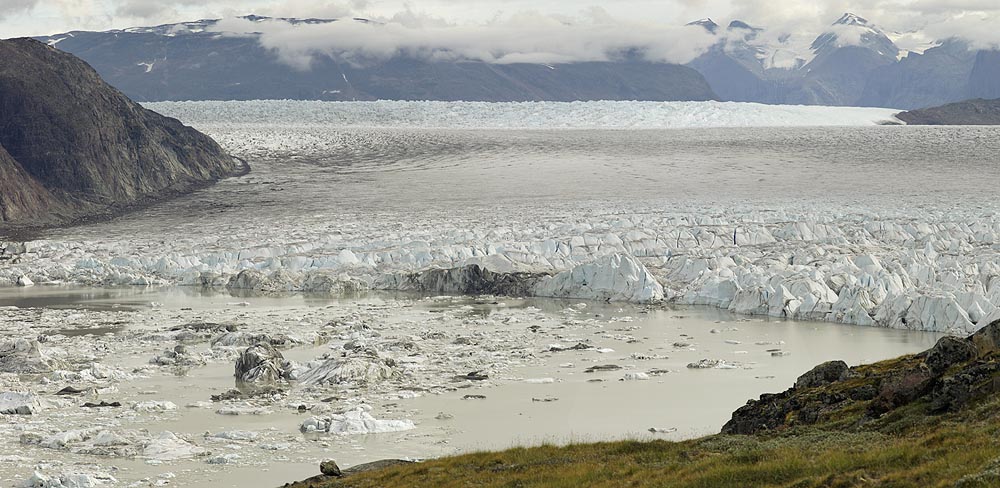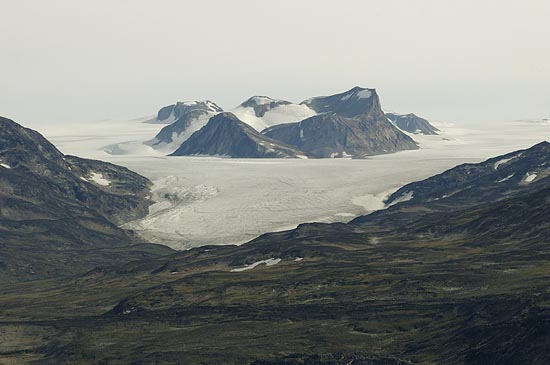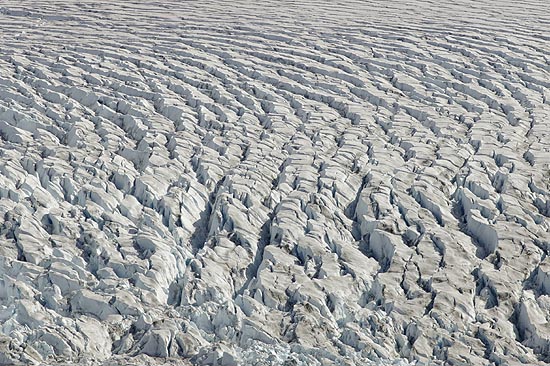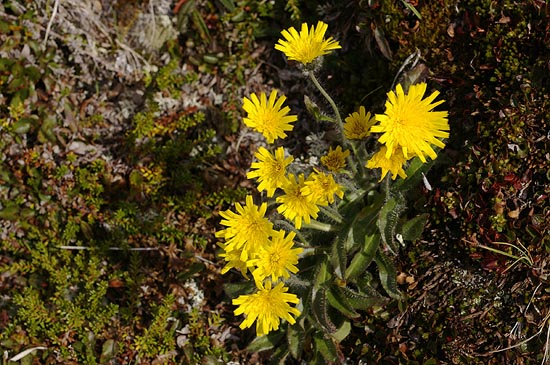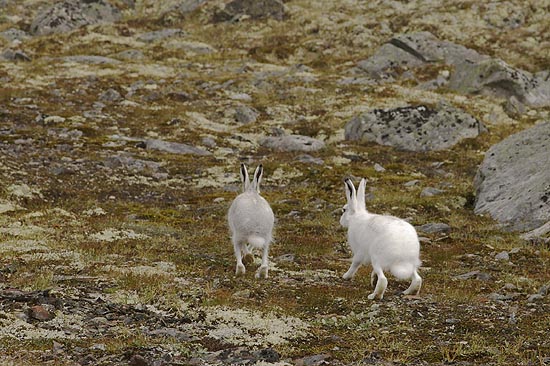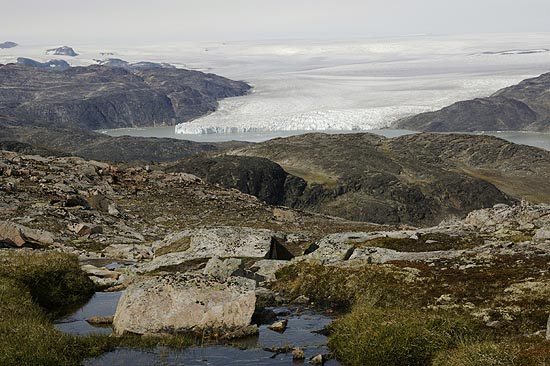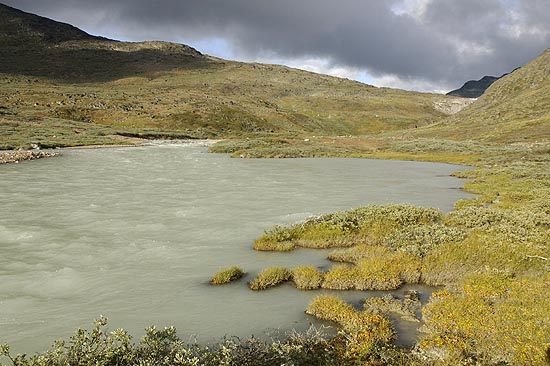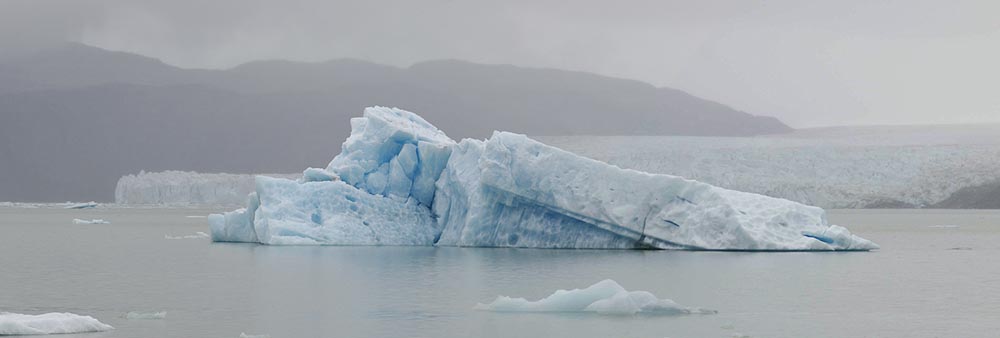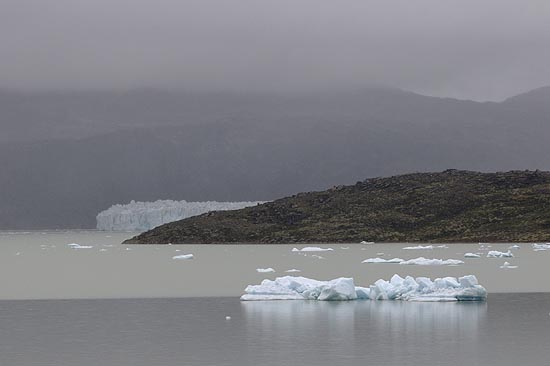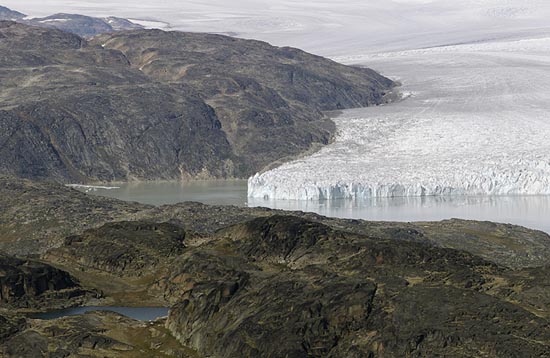Lake 930Since the area is uninhabited, a lake must be big and a moutain must be high to receive an individual name. An intermediate between a name and incognito is an elevation mark on the hiking map, so one can refer to a particular lake using its elevation. A habit also notorious for the military.
|
The HulletHullet is Danish and means "Hole". Resembling a lake it is nevertheless something special. The Northglacier, the one seen above, sends its meltwater to the Hullet, while the Sydglacier calves into it from the south, hence the ice. The resulting cocktail, however, frequently lifts the ice of the Sydglacier and drenchs beneath the Kuussuup Glacier towards Narsarsuaq, leaving the poor icebergs stranded in the sand. |
